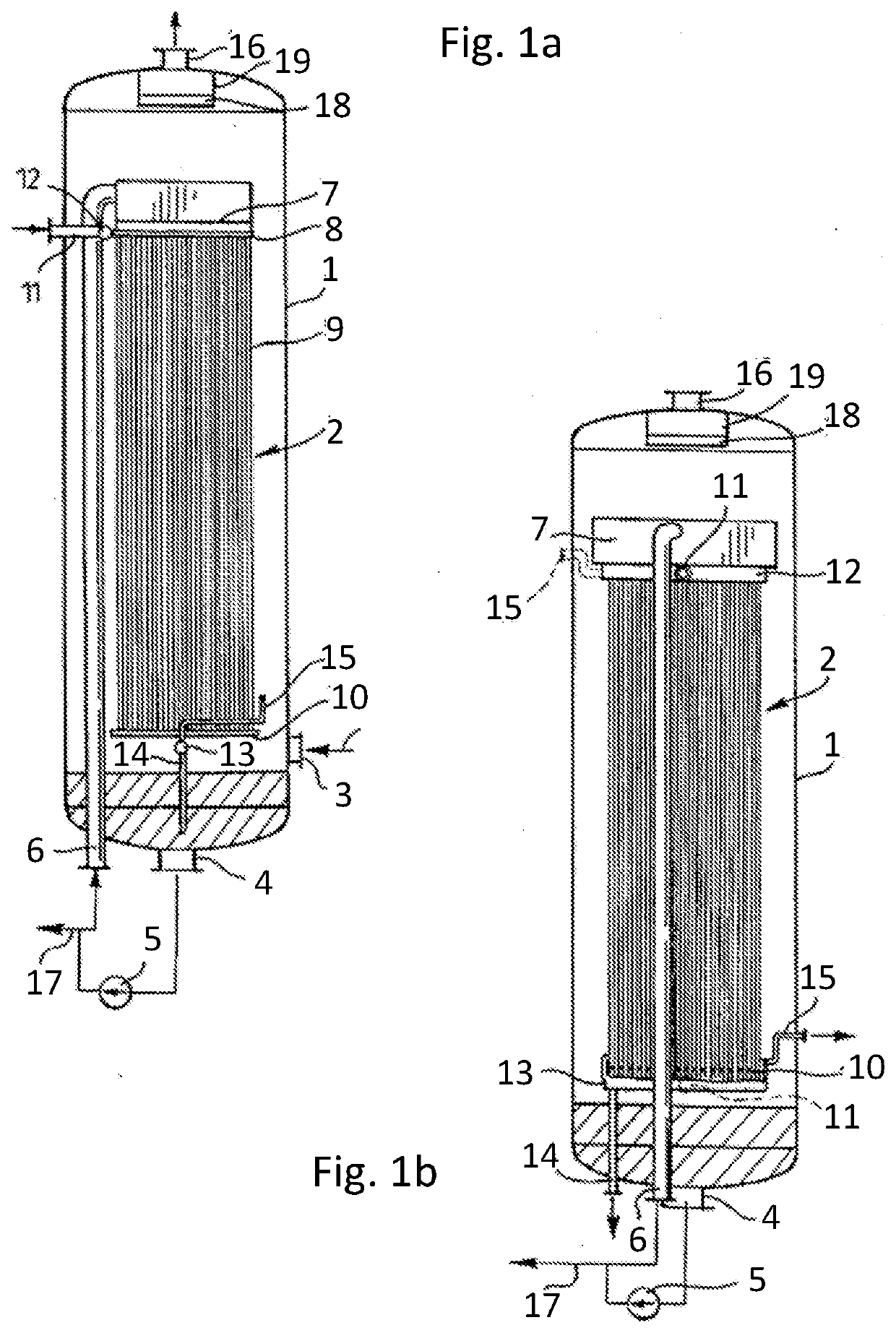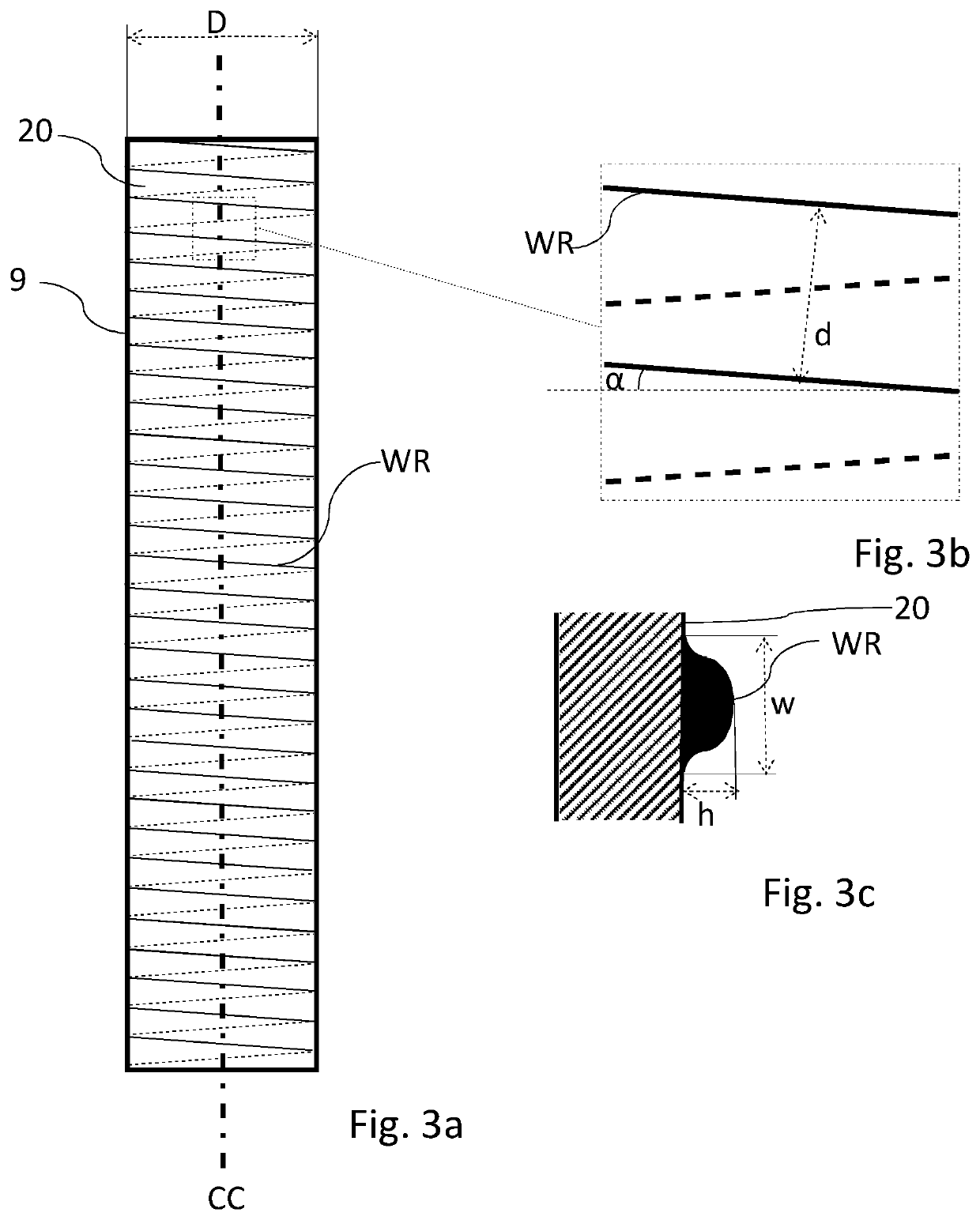Heat transfer tube and method for manufacturing a heat transfer tube
a heat transfer tube and heat transfer tube technology, applied in manufacturing tools, lighting and heating apparatus, separation processes, etc., can solve the problem that the volume of welding material for the weld ridge is relatively small, and achieve the effect of increasing the angle of each weld, improving the heat transfer rate, and increasing the distan
- Summary
- Abstract
- Description
- Claims
- Application Information
AI Technical Summary
Benefits of technology
Problems solved by technology
Method used
Image
Examples
first embodiment
[0051]In FIG. 3a is a heat transfer tube 9 according to the invention shown. In this case is a continuous surface weld applied on an outer falling film surface 20 of the heat transfer tube 9 and forming a multitude of weld ridges spaced apart along the longitudinal axis of the heat transfer tube. It should be understood that the surface weld may be applied instead on the inner surface of a heat transfer tube, if the thin film of spent cooking liquor flows on said inner surface. FIG. 3b shows an enlarged portion of FIG. 3a, and FIG. 3c a detailed cross section of the surface weld.
[0052]In the figures is:[0053]CC the longitudinal axis of the heat transfer tube 9;[0054]d the distance between adjacent weld ridges WR perpendicular to the longitudinal extension of the weld forming the weld ridges WR;[0055]α the inclination angle of the weld ridges WR versus a plane orthogonal to the center axis CC of the heat transfer tube 9, in this embodiment close to 15 degrees;[0056]The distance betwe...
second embodiment
[0059]FIG. 4a shows the heat transfer tube 9 according to the invention, with multiple surface welds applied to form parallel and continuous weld ridges WR. FIG. 4b shows an enlarged part of the heat transfer tube, wherein:[0060]d is the distance between adjacent weld ridges WR perpendicular to the longitudinal extension direction of the welds forming the weld ridges WR,[0061]α is the inclination angle of the weld ridges WR versus a plane orthogonal to the center axis CC of the heat transfer tube 9, in this embodiment about 45 degrees.[0062]The distance between adjacent weld ridges in a direction parallel to the longitudinal axis CC is calculated as d divided by cos α
third embodiment
[0063]FIG. 5a shows the heat transfer tube 9 according to the invention. A surface weld forms a multitude of first kind of weld ridges WR1, identical to the weld ridges WR shown in FIG. 3a, and a crossing butt weld forms a multitude of protruding second weld ridges WR2. FIG. 5b shows an enlarged part of the heat transfer tube 9, and FIG. 5c shows a cross section through one of the second kind of weld ridges WR2. The height h2 and width w2 of the second kind of weld ridges WR2 are of the same magnitude as for the first kind of weld ridge WR1, whereas the inclination angle α2 is somewhat steeper for the second kind of weld ridges WR2 and the distance d2 between adjacent second kind of weld ridges WR2 perpendicular to the longitudinal extension direction of the welds forming the weld ridges WR2 is longer. The distance between adjacent weld ridges along the longitudinal axis is d2 divided by cos α2.
PUM
| Property | Measurement | Unit |
|---|---|---|
| distance | aaaaa | aaaaa |
| distance | aaaaa | aaaaa |
| distance | aaaaa | aaaaa |
Abstract
Description
Claims
Application Information
 Login to View More
Login to View More - R&D
- Intellectual Property
- Life Sciences
- Materials
- Tech Scout
- Unparalleled Data Quality
- Higher Quality Content
- 60% Fewer Hallucinations
Browse by: Latest US Patents, China's latest patents, Technical Efficacy Thesaurus, Application Domain, Technology Topic, Popular Technical Reports.
© 2025 PatSnap. All rights reserved.Legal|Privacy policy|Modern Slavery Act Transparency Statement|Sitemap|About US| Contact US: help@patsnap.com



